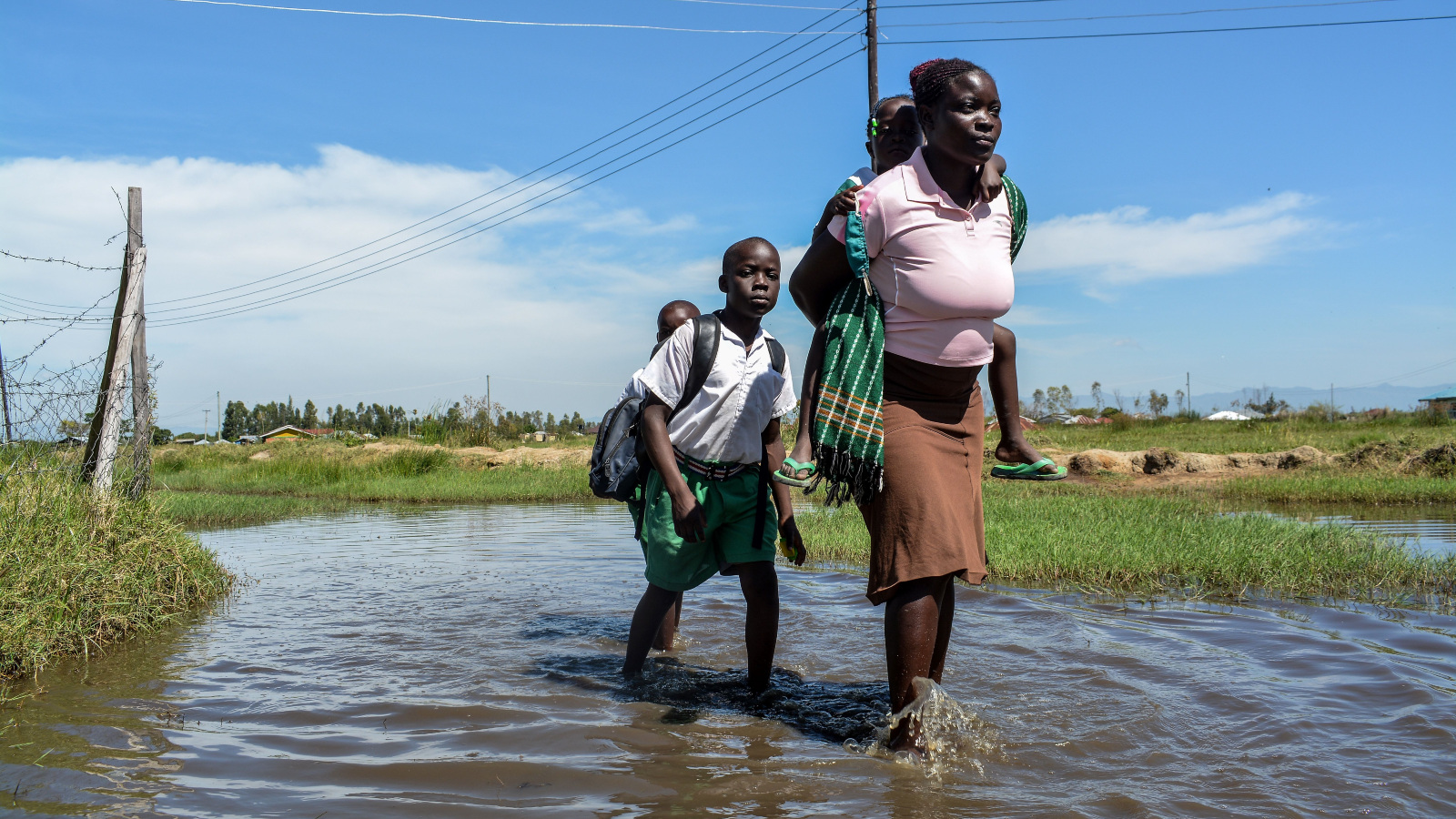Droughts and floods are already intensifying as the world warms, putting solid observational data behind a trend scientists have long predicted and one that’s becoming increasingly visible to ordinary people.
Over the past 20 years, there’s been a sharp increase in both the wettest and driest weather events on the planet, according to a study published Monday in the journal Nature Water. The research relies on satellite data from NASA’s Gravity Recovery and Climate Experiment, used to measure subtle changes in Earth’s stores of water, including groundwater, surface water, snow, ice, and soil moisture.
It’s a sign of more extremes ahead, said Matthew Rodell, a co-author of the study and a hydrologist at NASA, with the data providing “strong evidence” that climate change is amplifying droughts and floods. “This has been something that’s very difficult to prove,” Rodell said.
Last year alone was marked by devastating floods that left one-third of Pakistan underwater and the ongoing megadrought in the American Southwest. This year is proving to be another exceptional one for flooding, with California submerged by a series of atmospheric rivers and Mozambique receiving a year’s worth of rainfall in just the last month from Tropical Cyclone Freddy.
The most intense floods and droughts on Earth began occurring more frequently in 2015, at a rate of about four per year instead of three, the study found. The ensuing years have been the eight hottest on record. Climate change was the largest driver of this shift in dry and wet events, outweighing the effects of the planet’s natural swings between hotter and cooler years caused by the El Niño and La Niña climate patterns.
Looking at more than 1,000 drought and flood events around the globe from 2002 to 2021, researchers analyzed their size, duration, and severity. Previous research tended to focus on averages, which are easier to measure than extremes, Rodell said. The new satellite data was able to capture slower-moving disasters that could last months or years.
According to the study, the most severe event of the last two decades was the extreme rain that hit sub-Saharan Africa beginning in 2020. Months of precipitation caused water levels at Lake Victoria to rise by about three feet and flood into the surrounding area. In terms of intensity, it was three times as large as the next biggest rain event: the floods that covered much of the Midwestern and Eastern United States starting in 2018.
The most severe drought took place in northeastern South America from 2015 to 2016, followed by the ongoing drought in the Cerrado region of Brazil.
So how is climate change making the world both drier and wetter at the same time? It comes down to the way that hotter air affects the weather. Warmer air can suck moisture out of the soil, amplifying droughts. On the flipside, warm air can also hold more moisture, meaning that it can transport more water into an already wet region.
Researchers had to exclude some areas from the study. In places like California’s Central Valley and Northern India, the fast rate of groundwater depletion messed with the data, making it hard to untangle drought from overzealous water usage. In Greenland and Antarctica, melting ice sheets posed similar problems.
The research did not analyze recent events, such as the flooding in Pakistan or the atmospheric rivers drenching California and causing widespread damage after years of extreme drought. Swings between these dry and wet extremes, sometimes called “weather whiplash,” is becoming common in some regions, another pattern that scientists have anticipated.
The increase in extreme flooding and drought could hold “dire consequences” for human health, crops, and regional unrest, according to the study. Understanding the kinds of intense weather events that lie ahead is “really important in order to build resiliency, prepare, and prevent future hardship and economic and agricultural damage,” Rodell said.




